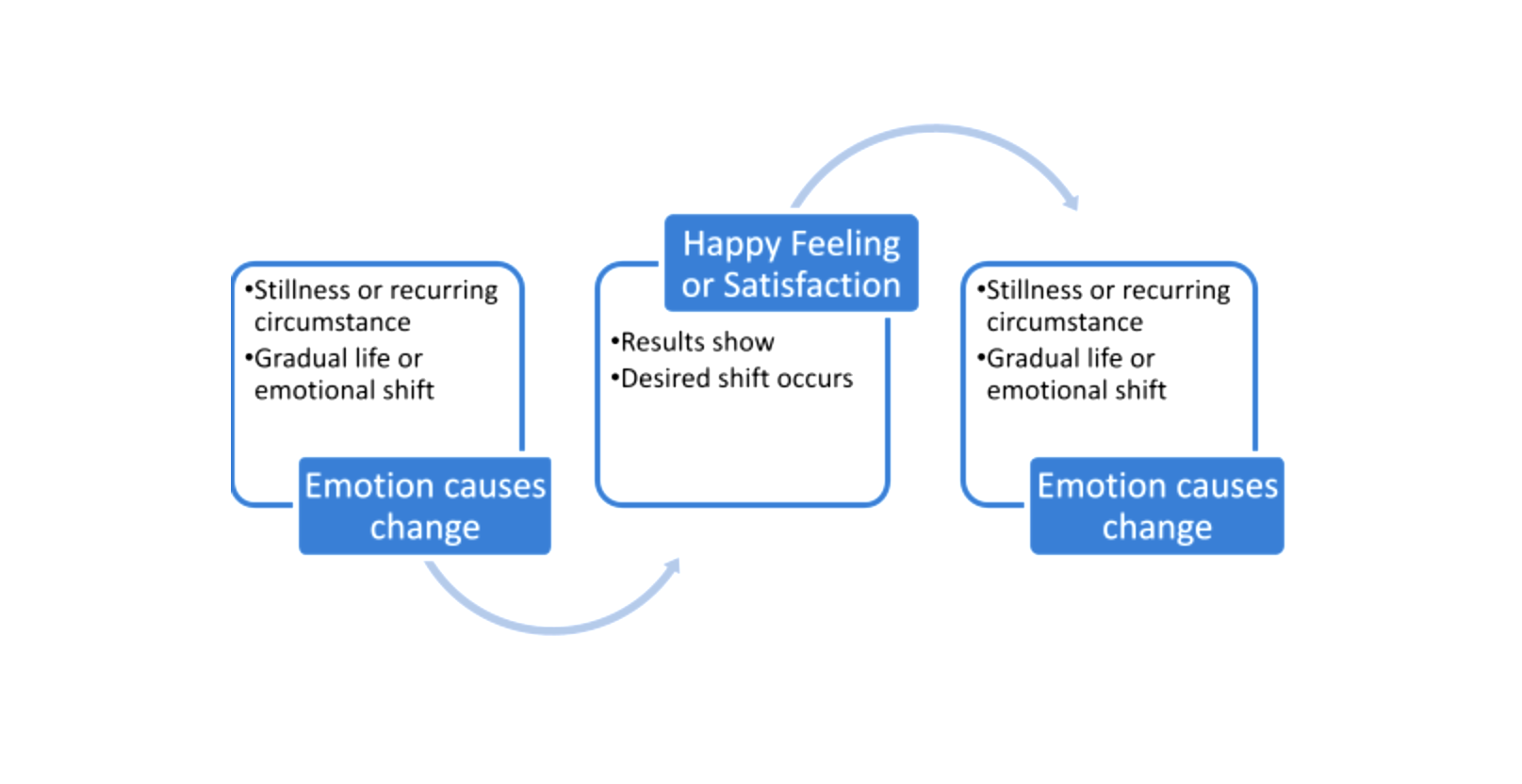Emotions are something that we know exist and often try to describe and define for ourselves and to others. In both our conscious and subconscious mind, there are many phases of feelings that we may be unable to fully communicate whether due to language limitations, self-consciousness, or social and peer pressures. A few predominant human emotions are frustration, happiness, and anger. These can be experienced as somewhat of a roller coaster effect or a gradual change on the wide spectrum of emotions. These emotions can be induced in a state of work, play, or relaxation. At times there is nothing specific to provoke the emotion such as a person or situation, yet these emotions still come to the surface. In such situations, there is certainly a thought process involved but why, for example, during a holiday break or vacation does internal unrest still exist? Perhaps we feel we are not readily producing results which may cause unrest, and as such we may feel impeded, and that causes upset. Alternatively, we may simply feel the need for a certain amount of mental exertion by exercising the mind through studying or reading and that need manifests itself emotionally.
Within the emotional spectrum, there can also be a waiting game. One waits for emotions like grief or anger to pass. In this phase, there is a long-term effect that can correlate to the daily or short-term effect. We have the possibility to experience daily micro emotional waves and long-term macro emotional waves in a kind of emotional duality. One certainly affects the other and when we feel the same intensity of emotion such as frustration due to an overdue deadline (a potentially short term emotion that may go away by the end of the workday) as the long term frustration of a large amount of debt, we can put our level of emotion into perspective. Removing the negative emotion surrounding a task does not denote the task’s importance or need for a solution etc. If anything, such an emotional shift amplifies the importance of a task by removing the potential emotional distraction.
As humans, how can we get to the point of productively processing and utilizing our emotions? How can we focus and shorten emotional distress and prevent it from spiraling into the macro level of frustration or elongating past the point of being an identifier? Accurately labeling and utilizing our emotions productively leads to an understanding of what might be good, wrong, irrelevant, or needs to be tweaked in a given situation or task.
Perspective comes into play to assess the degree of emotion in relation to its severity, length, and context. In the workplace, it is easy to act superficial, or try to subdue emotions, or fix the interaction merely enough for the task at hand. The mentality is basically “what do I need to do to get through this until the end of the workday?”. In our personal lives, however, there is no end of the workday. How can we be sure that we are not simply repeating certain negative emotions on autopilot as part of our subconscious characteristics?
A negative feeling is more likely to be endured longer. How can we exchange the length of happiness to be more extended even when something is wrong? Do we have something to prove by holding onto bad feelings about mistakes or hardships? Are we not the only ones who truly have to experience our feelings? Feelings and intuition have their place and can help aid us to grow intellectually, spiritually, and professionally. Would you like to be more critical and targeted with this aspect? How can we begin to make more actionable use of emotions on the short term, long term, professional and personal basis? Consider the merging of your personal and professional journey to nurture your emotional spectrum in a way that is not only resilient but also dynamic. Your emotional spectrum can be viewed as linear, cyclical, even as multidimensional. Are we an emotional pattern? Are we seeing many circumstances through one emotional lens? Is there a stopping and starting place? We can begin to be empowered to feel more that we exist in an emotional spectrum that can be experienced both firsthand and from the outside in a freeing way that does not exist solely from the idea of the need for emotional improvement or gaining but considers emotion simply as part of our existence.
Below are 5 diagrams that begin to illustrate some of the ways we can envision ourselves inside the emotional spectrum:
Dynamic Emotional Perspective 1: Depth and perspective are shown. Short term is farther away from the core and is as large as long term, but is not as central or critical to the self. Size may be large, but is not indicative of affecting the true core. In this diagram long term and short term orbit the self consistently.

Dynamic Emotional Perspective 2: In this diagram, there is a beginning middle and no true end. It is more practical that this linear path will be initiated situationally an indefinite number of times and that potential ends will resolve at the achievement. The achievement can be created by the self or an outside influence.

Dynamic Emotional Perspective 3: This is an example of how emotion or intuition is known to propel change. This diagram acknowledges an iterative nature with an applied purpose of emotion.

Dynamic Emotional Perspective 4: In this diagram long-term emotion is shown continuing to dominate the self over time, increasing in severity, but also resounding or existing from circumstances in close proximity and far from the actual self.

Dynamic Emotional Perspective 5: In this diagram, the self looks remotely in or as a third person reflectively as the larger circumstance is orbited by the changing or existing emotion.

https://www.atlibertylife.com/

Originally published at https://www.linkedin.com on April 28, 2017.
Originally published at medium.com


